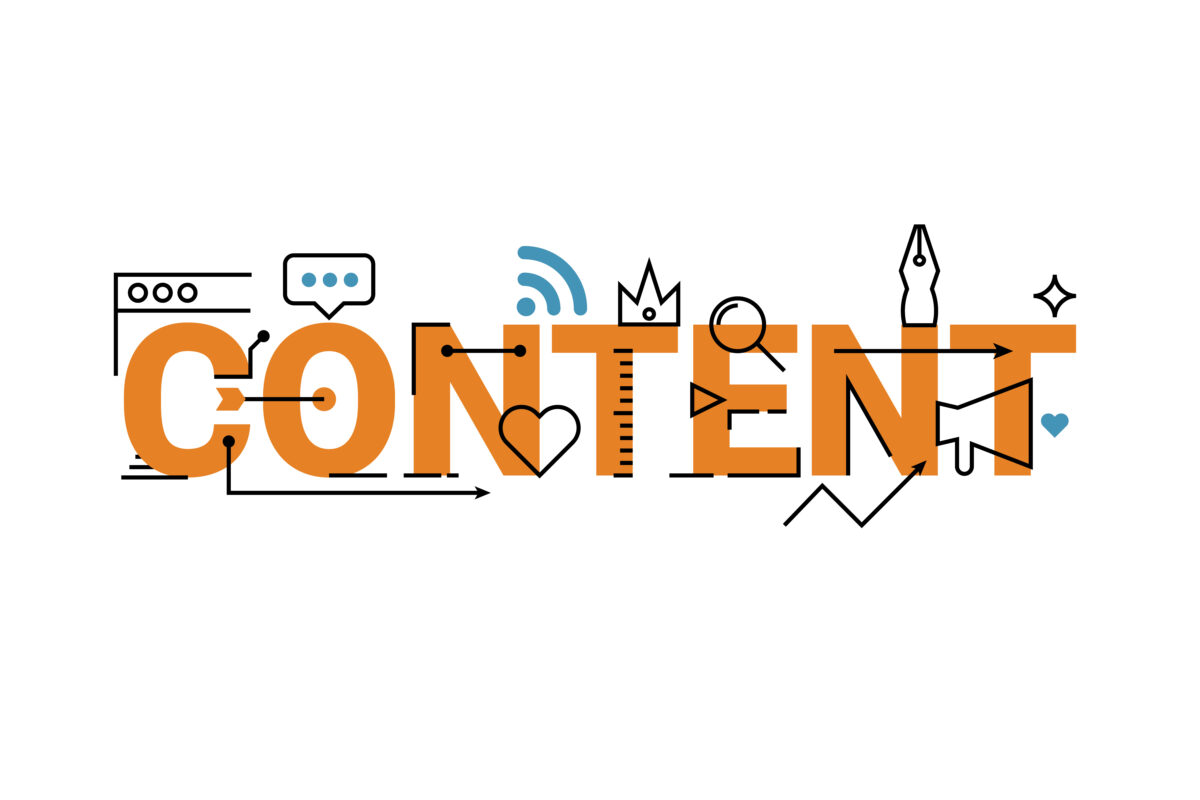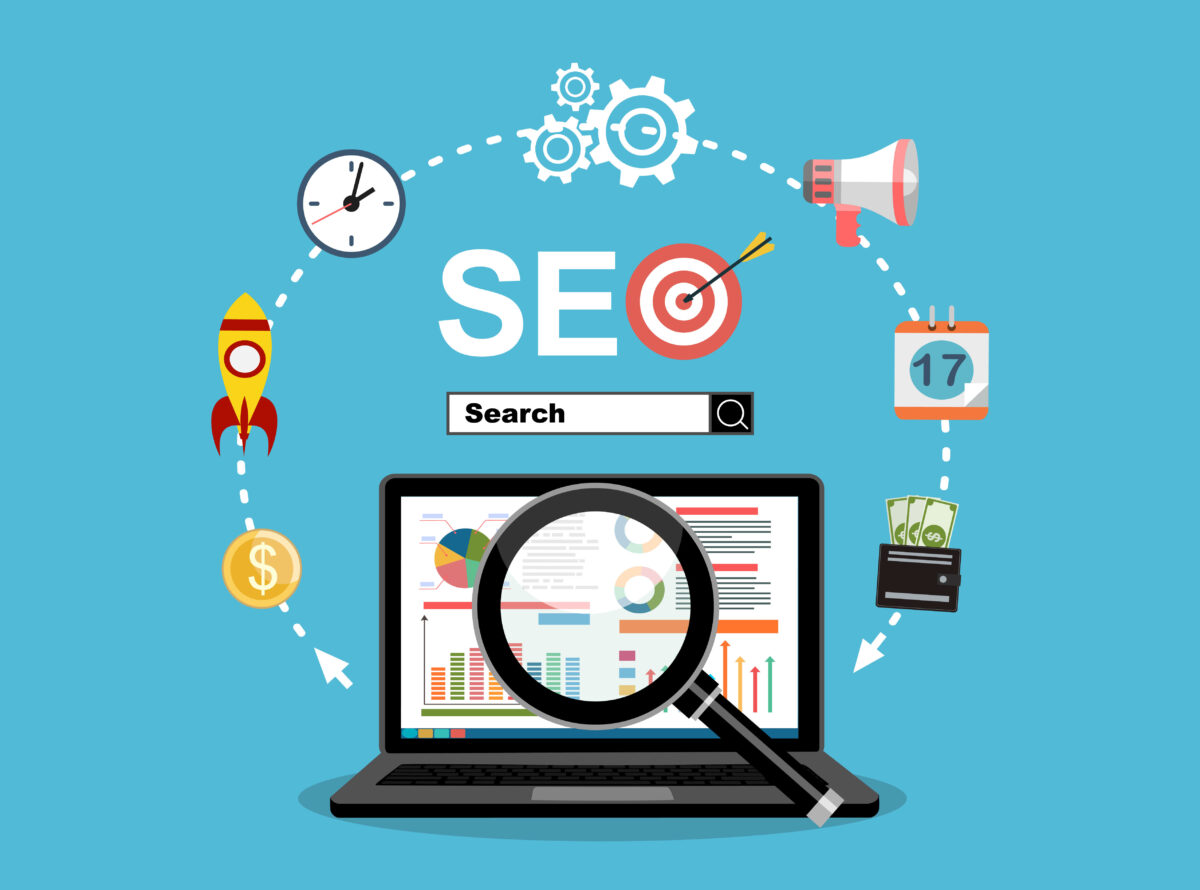
Creating an Effective Content Marketing Plan for Tech Companies
Content marketing plays a pivotal role in attracting, engaging, and retaining customers in the challenging technology sector. Using content marketing as a strategy for creating and distributing valuable, relevant, and consistent content is necessary for tech and SaaS companies providing B2B services and products.
Content Marketing in B2B Tech and SaaS
Content marketing is key to digital strategies, crucial for brand awareness, thought leadership, lead generation, and customer relationship building. In the B2B tech sector, it provides an opportunity to simplify complex concepts, showcase unique value propositions, and engage decision-makers seeking detailed information before making purchasing decisions.
This article empowers tech and SaaS marketing leaders with a guide for a comprehensive content plan. It covers audience understanding, goal setting, content strategy, SEO, content promotion, and ongoing optimization. With these actionable insights, you’ll boost your content marketing, propelling business growth.
Stay tuned as we unpack each of these elements, offering insights and practical steps to help you succeed in the competitive tech industry landscape.
Understanding the Basics of Content Marketing
Content marketing is an essential facet of any successful business strategy, especially in the tech and SaaS industries. It involves creating, publishing, and distributing content to attract, engage, and retain your target audience. To ensure results from your content marketing efforts, certain fundamental principles must be adhered to. Here are a few crucial basics that every marketer should keep in mind:
- Audience-First Approach: The first rule of content marketing is to know your audience. Understanding their needs, preferences, and pain points should guide your content creation process. This helps generate content that resonates with them, grabs their attention, and adds value to their lives or businesses.
- Quality Over Quantity: In content marketing, quality always beats quantity. Prioritize creating insightful, high-value content to engage your audience and position your brand as an expert.
- Diversify Your Content: Content marketing isn’t limited to blog posts. Delve into videos, infographics, ebooks, webinars, podcasts, and social media posts to cater to different audience preferences and repurpose content across multiple platforms.
- Consistency is Key: Consistency is vital in content marketing. It helps keep your brand at the top of your audience’s mind, fosters trust, and improves your visibility on search engine results pages (SERPs).
- Optimize for SEO: Search engine optimization (SEO) is crucial in content marketing. By incorporating relevant keywords, meta tags, and link-building strategies in your content, you can improve its visibility on SERPs, attract organic traffic, and reach a larger audience.
- Measure and Adjust: Content marketing requires continuous improvement. Track key metrics such as traffic, engagement, and conversions to gain insights and refine your strategy for higher impact.
Understanding these basics of content marketing can provide a strong foundation for your strategy. In the following sections, we’ll delve deeper into how to identify your audience, set clear goals, and create a robust content strategy.
Identifying Your Audience: A Crucial Step in Content Marketing Strategy
Understanding your audience is crucial in B2B tech content marketing. The success of your strategy depends on knowing your audience well and effectively catering to their needs.
Why Knowing Your Audience Matters in B2B Tech Marketing
Knowing your audience in B2B tech marketing is crucial for the following reasons:
- Precision: In B2B tech marketing, the buyer’s journey is usually complex and involves multiple stakeholders. By knowing your audience, you can create targeted content that addresses each stakeholder’s concerns and influences their decision-making process.
- Relevance: Understanding your audience’s needs, preferences, and challenges allows you to create relevant and valuable content, thereby increasing the chances of engagement and conversion.
- Resource Optimization: Knowing your audience enables efficient resource allocation, allowing you to create targeted content and maximize your return on investment.
How to Identify Your Target Audience
Identifying your target audience involves understanding who is most likely to need and purchase your product or service. Here are some steps to help you identify your target audience:
- Examine Your Existing Customers: Understand your customer base by analyzing existing users, their industries, roles within their organizations, and the challenges your product helps them overcome.
- Conduct Market Research: Use tools like surveys, interviews, and industry reports to gain insights into the needs and challenges of potential customers.
- Analyze Your Competitors: Understand who your competitors are targeting. This can provide valuable insights into who finds value in similar products or services.
The Role of Buyer Personas
Once you have identified your target audience, develop buyer personas—semi-fictional representations of ideal customers based on real data about demographics, behavior, motivations, and goals. The benefits of creating buyer personas include:
- Personalized Content: Buyer personas allow you to tailor your content to specific segments of your audience, making it more relevant and effective.
- Product Development: By understanding your buyer personas, you can ensure your product development aligns with your customers’ needs.
- Sales Strategy: Clear buyer personas help your sales team understand the prospects they’re dealing with, leading to more effective sales strategies and higher conversion rates.
In conclusion, understanding your audience is fundamental to a successful content marketing strategy, enabling the creation of relevant content that resonates and drives engagement and conversions.
Setting Clear Goals and KPIs: Guiding Your Content Marketing Strategy
A content marketing strategy without clear goals is like sailing without a compass—you might be moving, but not necessarily in the right direction. This is why setting specific, measurable, achievable, relevant, and time-bound (SMART) goals is crucial.
The Importance of SMART Goals
SMART goals are essential for any successful content marketing strategy, providing direction, accountability, and measurable success. Here’s how:
- Specific: Goals should be clear and specific to provide a sense of direction.
- Measurable: You should be able to track and measure progress towards your goals.
- Achievable: Goals should be realistic, considering your resources and constraints.
- Relevant: Your goals should align with your business objectives.
- Time-bound: Each goal should have a deadline to encourage focus and urgency.
Key Performance Indicators in Content Marketing
Key Performance Indicators (KPIs) are the metrics you use to measure the success of your content marketing efforts. These can vary based on your goals but may include:
- Traffic Metrics: This includes page views, unique visitors, and sessions and indicates how many people are viewing your content.
- Engagement Metrics: Metrics like time on page, bounce rate, likes, shares, and comments can show how your audience is interacting with your content.
- SEO Metrics: These include organic search rankings, backlinks, and keyword performance. These metrics help gauge your content’s visibility on search engines.
- Conversion Metrics: These track how many leads or customers your content generates. This could be newsletter sign-ups, demo requests, or actual sales.
Balancing Short-term and Long-term Goals
It’s crucial to strike a balance between your short-term and long-term goals. While short-term goals like increasing website traffic or social media followers provide quick wins and boost team morale, long-term goals such as improving brand recognition are vital for sustained growth.
Balance goals by defining long-term objectives, breaking them into smaller and contributing short-term goals. Regularly review and adjust your goals, acknowledging progress toward long-term objectives may take time.
In conclusion, setting clear, SMART goals and tracking KPIs is integral to a successful content marketing strategy. They provide direction, enable measurement, and ensure your content marketing efforts contribute to your broader business objectives.
Creating a Content Strategy: Mapping Your Way to Success


Once you’ve identified your audience and set your goals, the next step in your content marketing strategy is creating compelling content. This involves brainstorming content ideas, creating a content calendar, and determining the types of content to produce.
Brainstorming Content Ideas
Coming up with content ideas that resonate with your audience requires understanding their needs, preferences, and challenges. Here are some ways to generate content ideas:
- Understand Your Audience: Use your buyer personas and audience research to identify topics of interest.
- Solve Problems: Address common issues or challenges your audience faces.
- Monitor Trends: Stay abreast of industry trends and news, and create content around these topics.
- Leverage Analytics: Use data from your website, social media, and other platforms to identify which types of content perform best.
- Competitor Analysis: Look at what content your competitors are producing and identify gaps you can fill.
The Importance of a Content Calendar
A content calendar is a schedule that outlines when and where you’ll publish upcoming content. It’s crucial for several reasons:
- Consistency: Regularly posting fresh content can help maintain audience engagement and improve SEO.
- Planning: It allows you to plan your content around key events or dates.
- Team Collaboration: A content calendar helps coordinate efforts across your team, ensuring everyone knows their deadlines and responsibilities.
- Variety: It ensures you maintain a healthy mix of content types and themes.
Types of Content to Consider
There’s a wide variety of content types you can consider as part of your content strategy. Some of these include:
- Blogs: These are excellent for sharing insights, providing value to your audience, and improving SEO.
- Whitepapers: These in-depth reports can showcase your expertise and provide valuable information to your audience.
- Webinars: These can be used to educate your audience, demonstrate your product, or discuss industry trends.
- Infographics: These visual content pieces can help simplify complex information and are highly shareable.
- Social Media Posts: These can help boost visibility, engage with your audience, and drive traffic to your website.
- Email Newsletters: These can help nurture leads, keep your audience informed, and drive repeat traffic to your website.
A strong content strategy involves generating audience-centric ideas, adhering to a consistent posting schedule with a content calendar, and using diverse content types for sustained audience engagement. Implementing these steps ensures fruitful content marketing efforts.
Implementing SEO Best Practices: Enhancing Your Content Visibility


Search Engine Optimization (SEO) plays a pivotal role in content marketing. It’s the process of optimizing your content to rank higher on search engine result pages (SERPs), thereby increasing your visibility and driving organic traffic to your website.
The Role of SEO in Content Marketing
SEO is critical in content marketing for several reasons:
- Visibility: High-ranking content on SERPs gets more visibility, leading to increased website traffic.
- Credibility: Websites that appear at the top of search results are often perceived as more credible and trustworthy.
- User Experience: Good SEO practices improve the user experience, making it easier for visitors to navigate your website and find what they’re looking for.
- Cost-Effective Marketing: Organic traffic generated from SEO is free, making it a cost-effective strategy for attracting potential customers.
Keyword Research and Optimization
Keywords are the terms that people use to search for content online. Here’s how you can leverage them:
- Keyword Research: Use tools like Google Keyword Planner, SEMrush, or Ahrefs to identify keywords relevant to your business and audience.
- Long-Tail Keywords: These are longer, more specific keyword phrases. They often have lower search volumes but can attract more qualified traffic.
- Keyword Optimization: Include your keywords in strategic places like your title tag, headers, meta description, and throughout your content.
Remember, the goal is not to stuff your content with keywords but to incorporate them naturally and meaningfully.
Importance of Backlinking and Effective Strategies
Backlinks—when another website links to yours—are a key factor in how search engines rank content. They serve as endorsements of your content’s quality and relevance. Here are some strategies to earn backlinks:
- Create Quality Content: High-quality, unique content is more likely to be linked to by other websites.
- Guest Posting: Writing articles for other websites in your industry can earn you backlinks and expose your content to a wider audience.
- Influencer Outreach: Engage with influencers in your industry. If they find your content valuable, they may link to it from their platforms.
- Broken Link Building: Find broken links on other websites that are relevant to your content, and suggest your content as a replacement.
By implementing SEO best practices and focusing on keyword research and optimization, you can significantly boost your content marketing efforts.
Promoting Your Content: Maximizing Reach and Engagement
Creating high-quality content is only half the battle; the other half is ensuring it reaches your target audience. Content promotion, through social media, email marketing, and paid promotions, is key to effective distribution.
Leveraging Social Media for Content Promotion
Social media platforms offer a great way to promote your content and engage with your audience. Here’s how:
- Choose the Right Platforms: Not all social media platforms will be suitable for your business. Choose the ones where your target audience spends most of their time.
- Share Your Content: Regularly share blog posts, infographics, videos, and other content on your social media channels.
- Engage with Your Audience: Respond to comments, answer questions, and interact with your followers to build relationships.
- Use Hashtags: Hashtags can increase the visibility of your posts, helping you reach a larger audience.
Email Marketing as a Content Distribution Channel
Email marketing is one of the most effective channels for content distribution. Here’s why:
- Direct Communication: Emails allow you to communicate directly with your audience, delivering content straight to their inbox.
- Personalization: You can segment your email list and send personalized content based on the recipient’s interests, behavior, or stage in the sales funnel.
- Performance Tracking: Email marketing tools provide analytics that can help you measure open rates, click-through rates, and conversions, helping you improve your strategy over time.
The Role of Paid Promotions in Content Marketing
Paid promotions can amplify your content’s reach and help you target specific audience segments. Here’s how you can use them:
- Pay-Per-Click (PPC) Advertising: Platforms such as Google AdWords enable you to showcase your content in search results for specific keywords.
- Social Media Ads: Platforms like Facebook, Instagram, and LinkedIn provide advertising options to enhance the visibility of your content.
- Sponsored Content: Sponsored Content involves paying a third-party platform to promote various content types, like blog posts, infographics, or videos.
Remember, while paid promotions can boost your reach, integrate them thoughtfully into a balanced strategy that incorporates organic content promotion methods.
Optimizing content promotion entails harnessing social media, utilizing email marketing, and exploring paid promotions. Employing these tactics ensures broad content reach and increased engagement with your audience.
Measuring and Optimizing Your Content: Ensuring Continuous Improvement
In content marketing, measuring performance and optimizing based on data is crucial. It helps you understand what works, what doesn’t, and how to enhance your strategy for better results.
Tools for Tracking Content Performance
Several tools can help you track your content’s performance. Here are a few examples:
- Google Analytics: This tool provides a wealth of data about your website traffic, user behavior, and content performance.
- Social Media Analytics: Platforms like Facebook, Instagram, LinkedIn, and Twitter have built-in analytics that provide insights into your content’s performance.
- SEO Tools: Tools like SEMrush, Ahrefs, and Moz provide data on keyword rankings, backlinks, and other SEO metrics.
- Email Marketing Tools: Tools like Mailchimp or SendinBlue provide insights into email open rates, click-through rates, and conversions.
Analyzing and Interpreting Data
Interpreting data from these tools involves understanding key metrics and what they mean for your content strategy:
- Traffic: The number of people visiting your website or viewing your content.
- Engagement: Metrics such as likes, shares, comments, and time spent on a page can indicate how well your audience is engaging with your content.
- Conversions: These are actions you want users to take, such as subscribing to a newsletter, filling out a form, or making a purchase.
- Bounce Rate: This is the percentage of visitors who leave your site after viewing only one page. A high bounce rate may indicate that your content isn’t resonating with visitors.
Optimizing Content Based on Performance Data
Once you’ve analyzed your data, use it to optimize your content. Here are some steps to consider:
- Improve Low-Performing Content: Consider updating low-performing content with better information, adding relevant keywords, or improving the layout for readability.
- Promote High-Performing Content: Promote well-performing content more heavily on your social media channels, in your email newsletters, or through paid ads.
- Test Different Strategies: Experiment with different content types, topics, posting schedules, and promotional strategies to see what works best.
- Listen to Your Audience: Use feedback and comments from your audience to guide your content creation and optimization efforts.
Assessing and refining your content is vital for a successful content marketing strategy. Using the right tools and analyzing performance data help continually enhance your content’s effectiveness, achieving marketing goals.
Conclusion: Driving Marketing Success Through Content
Content marketing is a powerful tool for tech marketing leaders. Implementing SEO best practices, effective content promotion, and regular measurement and optimization can significantly boost brand visibility, enhance audience engagement, and drive conversions.
However, we understand that not all businesses have the time, resources, or expertise to manage their content marketing efforts in-house. This is where a marketing agency can step in. Partnering with an agency allows you to leverage their expertise in strategy, planning, and executing your content marketing plans, saving you time and ensuring optimized success.
In conclusion, whether managing content marketing internally or working with an agency, the key is a dedicated commitment to delivering high-quality, relevant content that resonates with your audience. Content is king, with the potential to propel your marketing successes to new heights.
Want to make your marketing decisions data-driven?
Talk to the marketing experts at Cyan today. Contact Us.


Discover what Cyan can do for you
We want to get to know you better so we can understand what services are going to help you meet your goals.